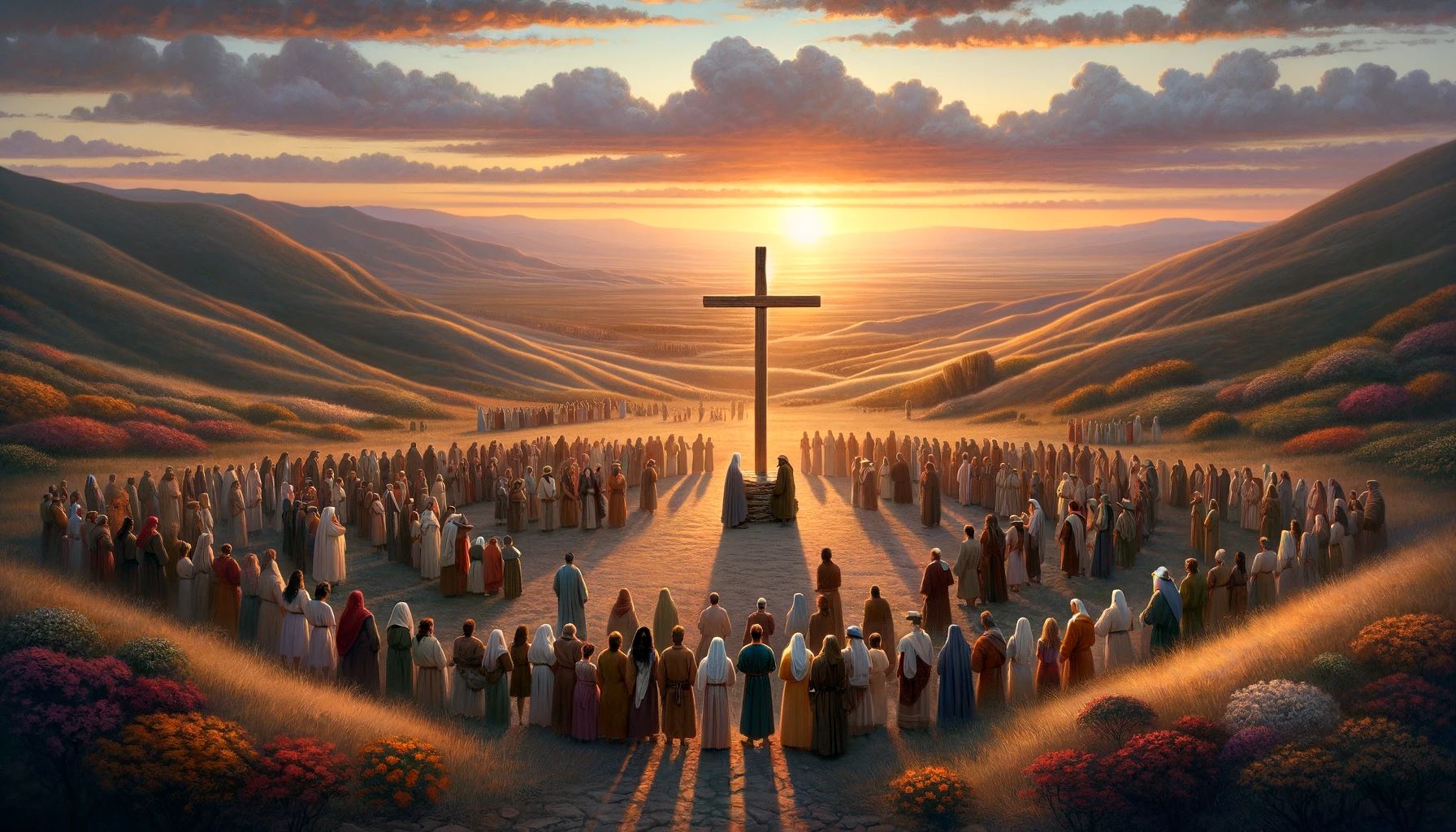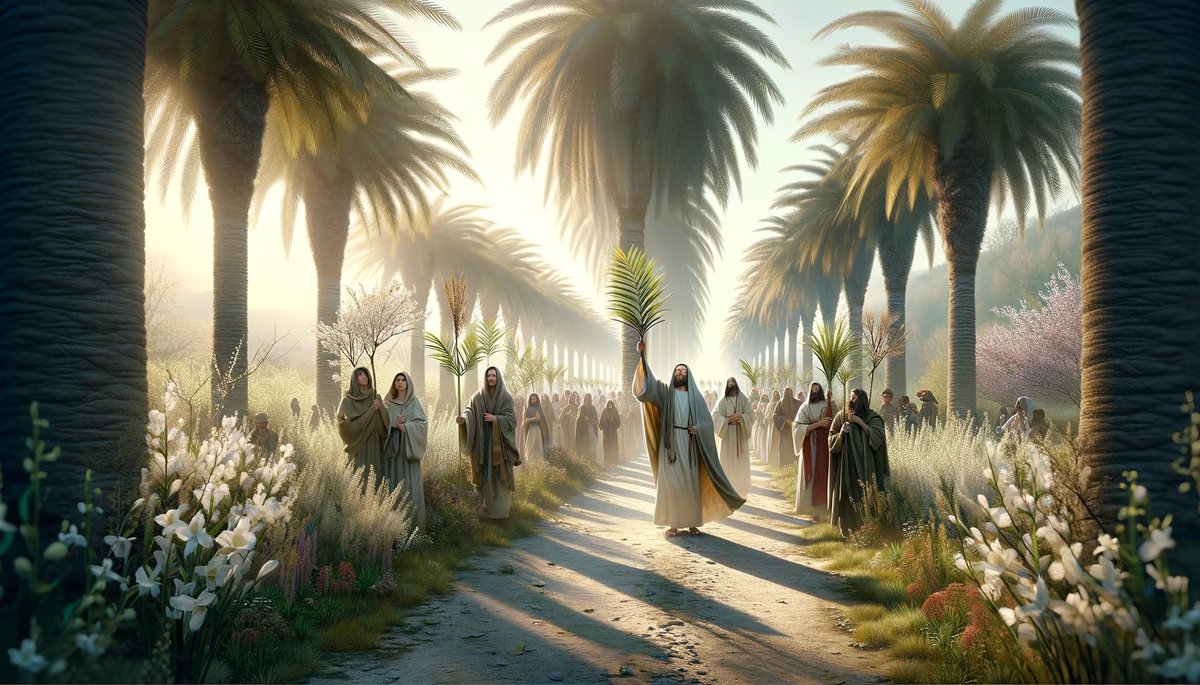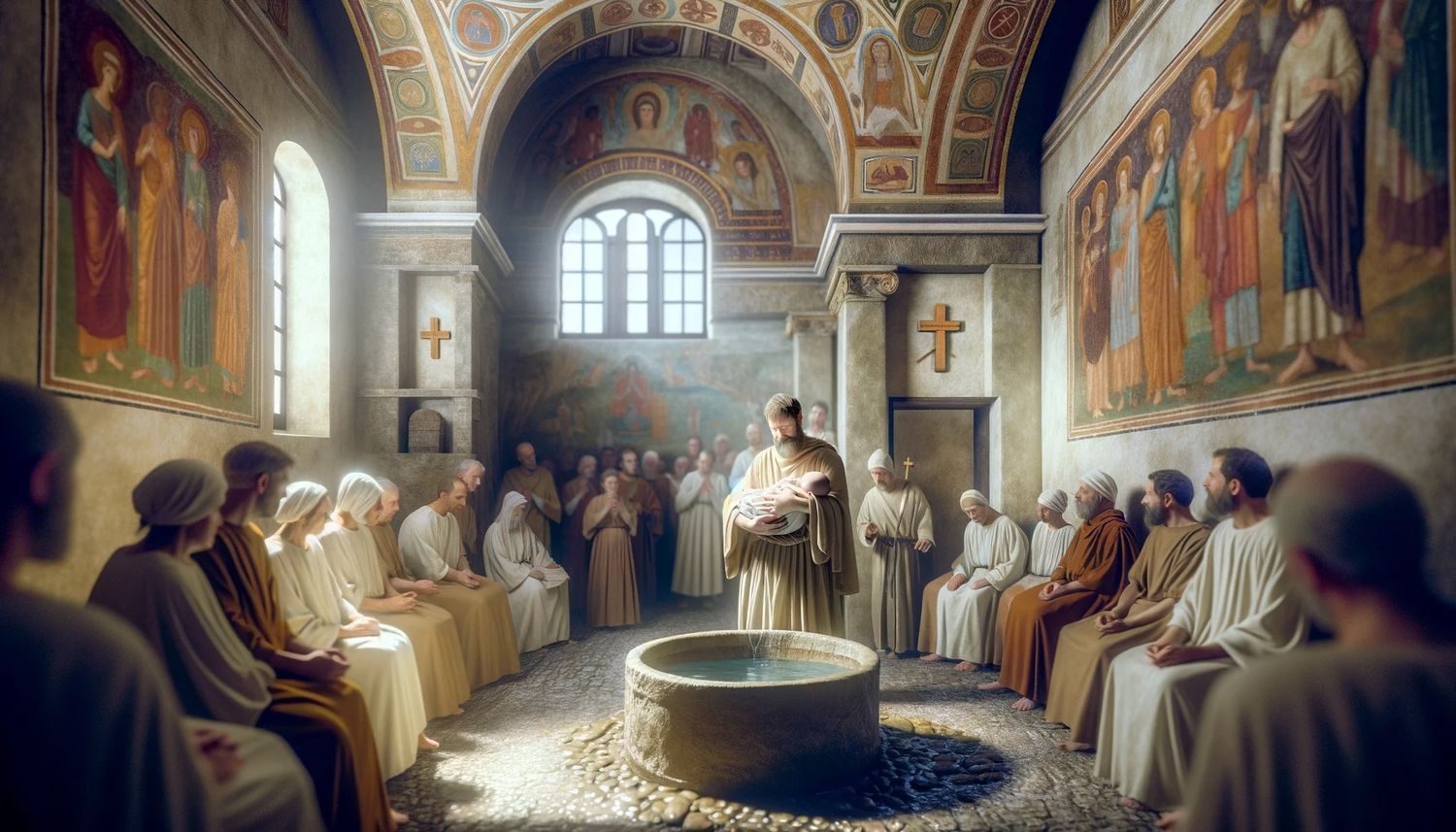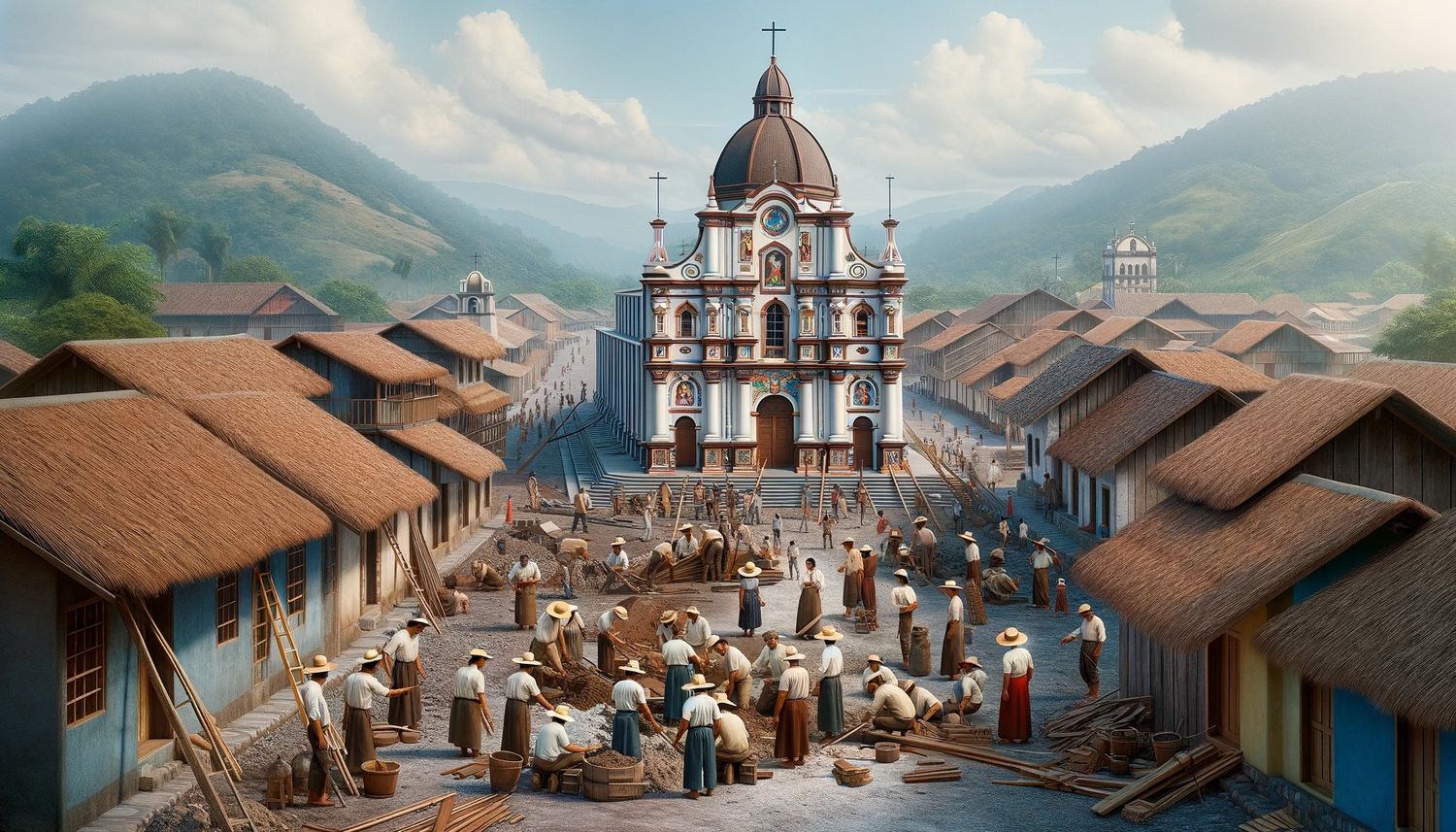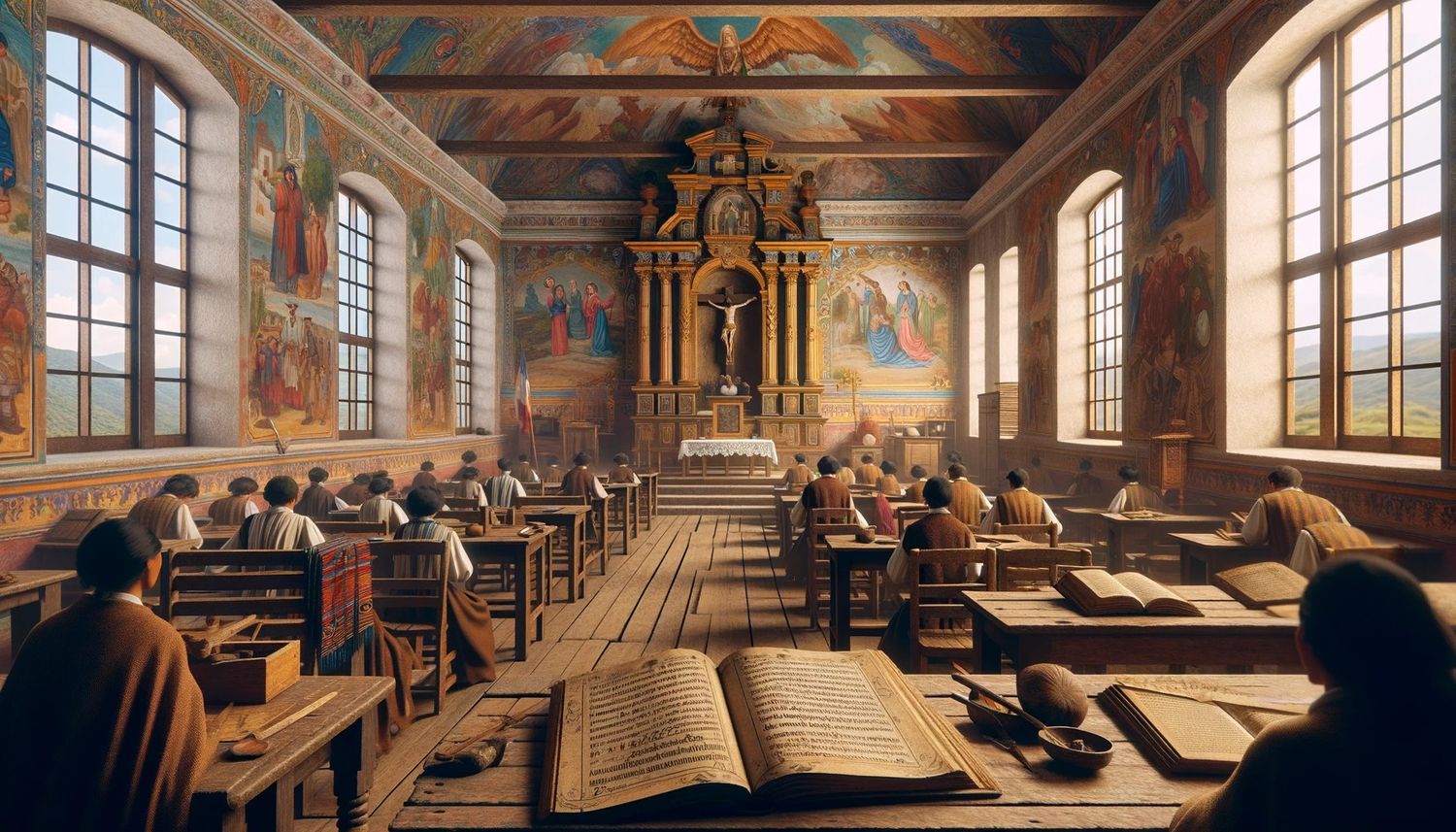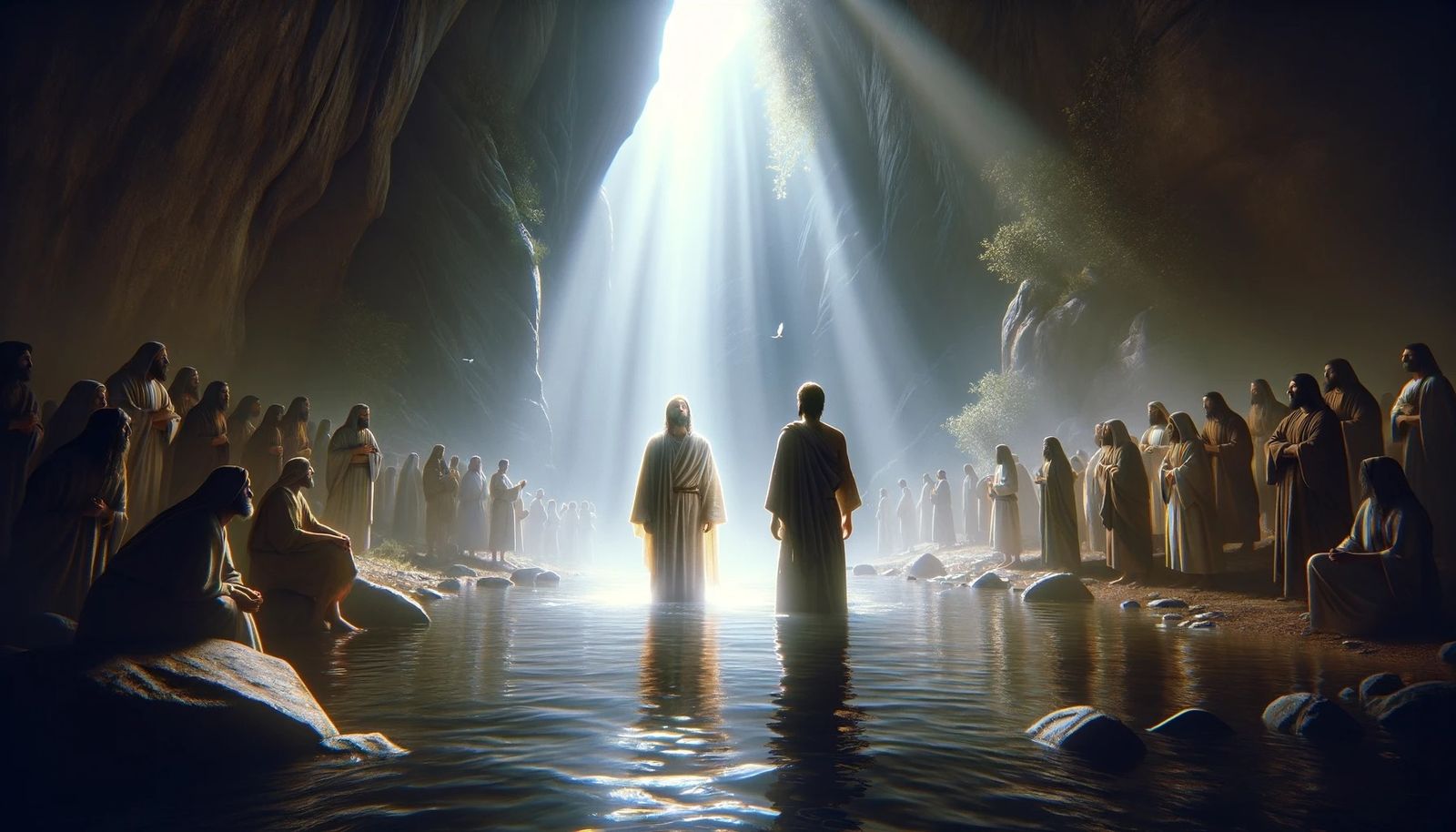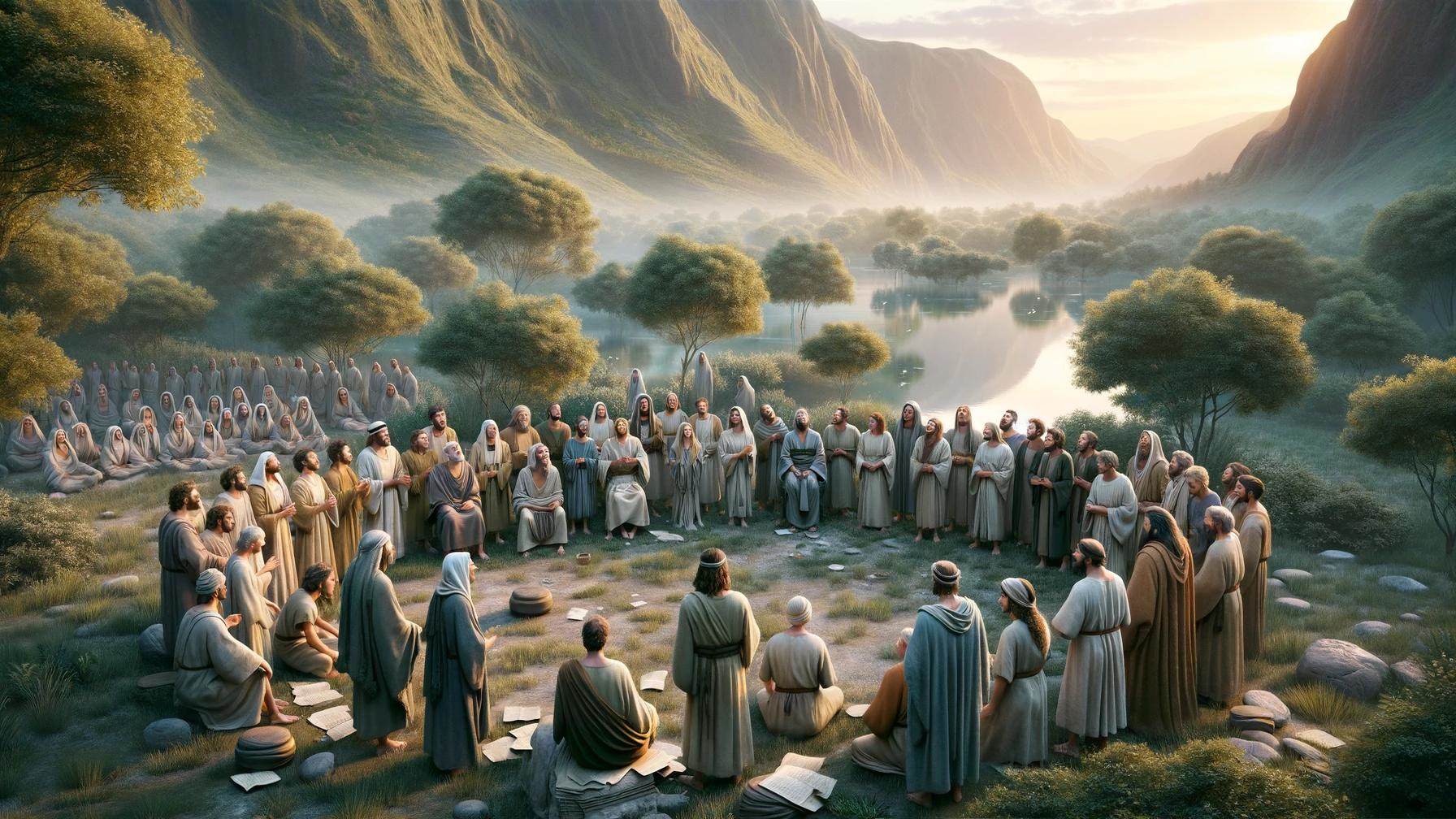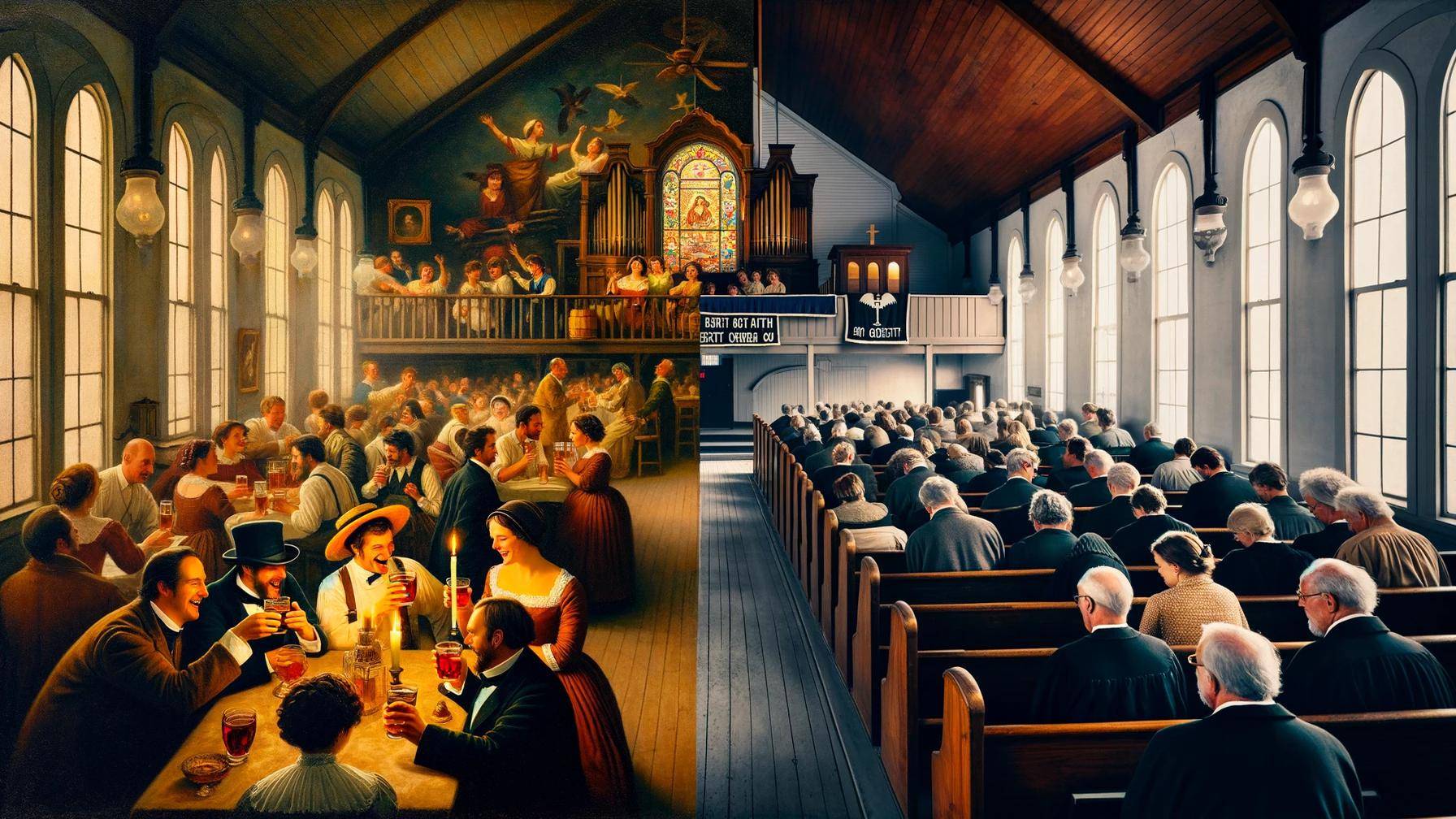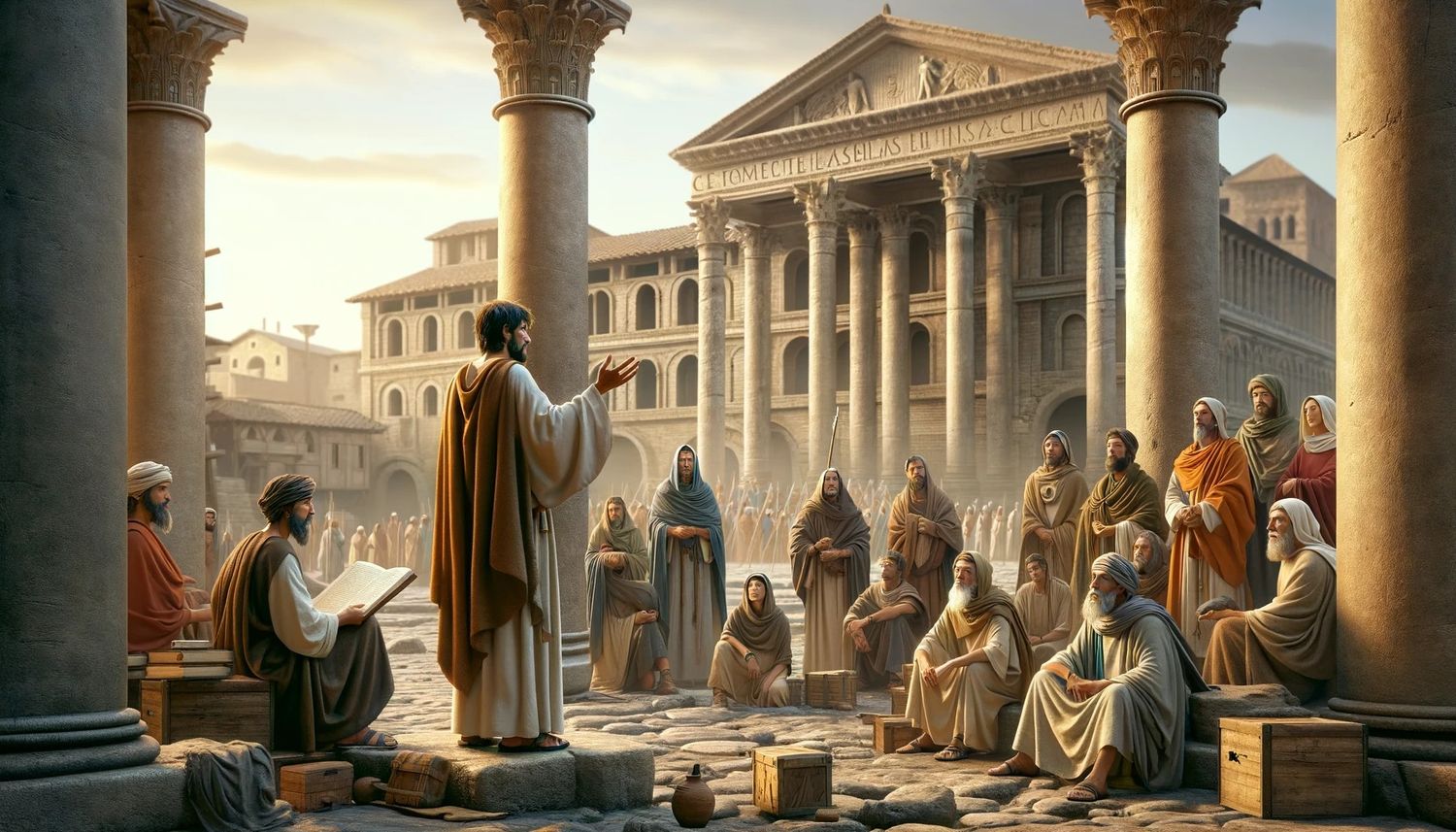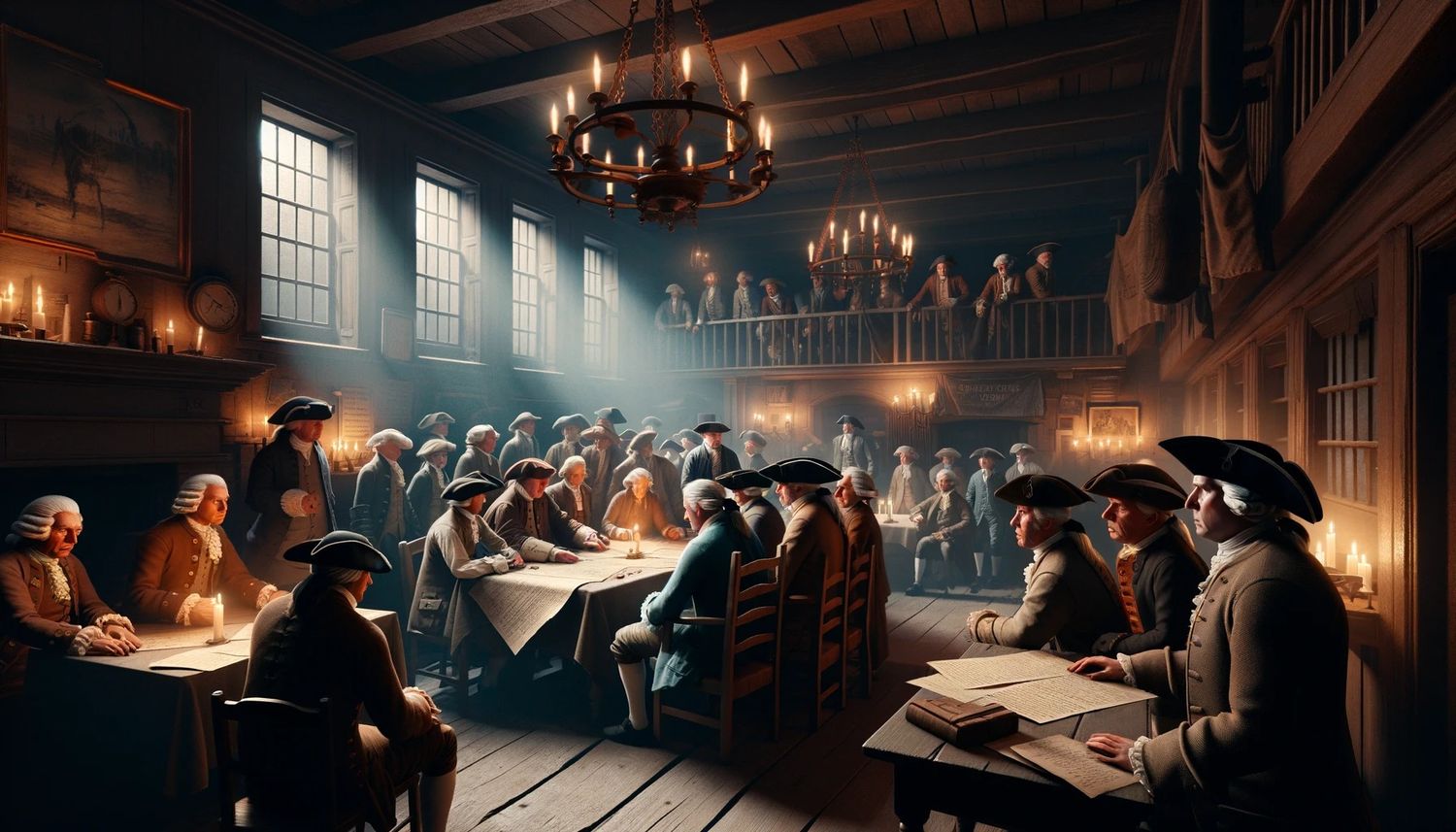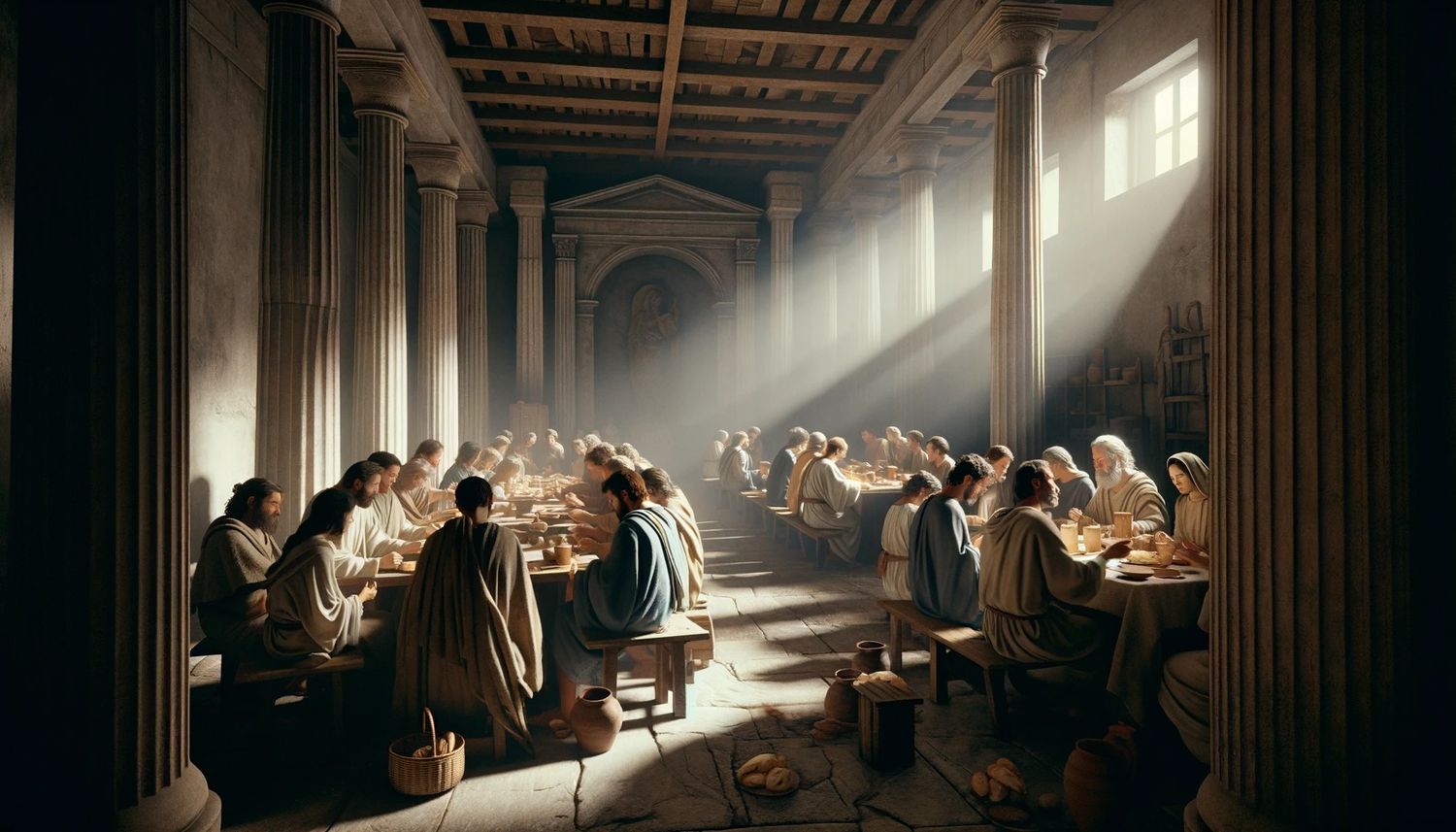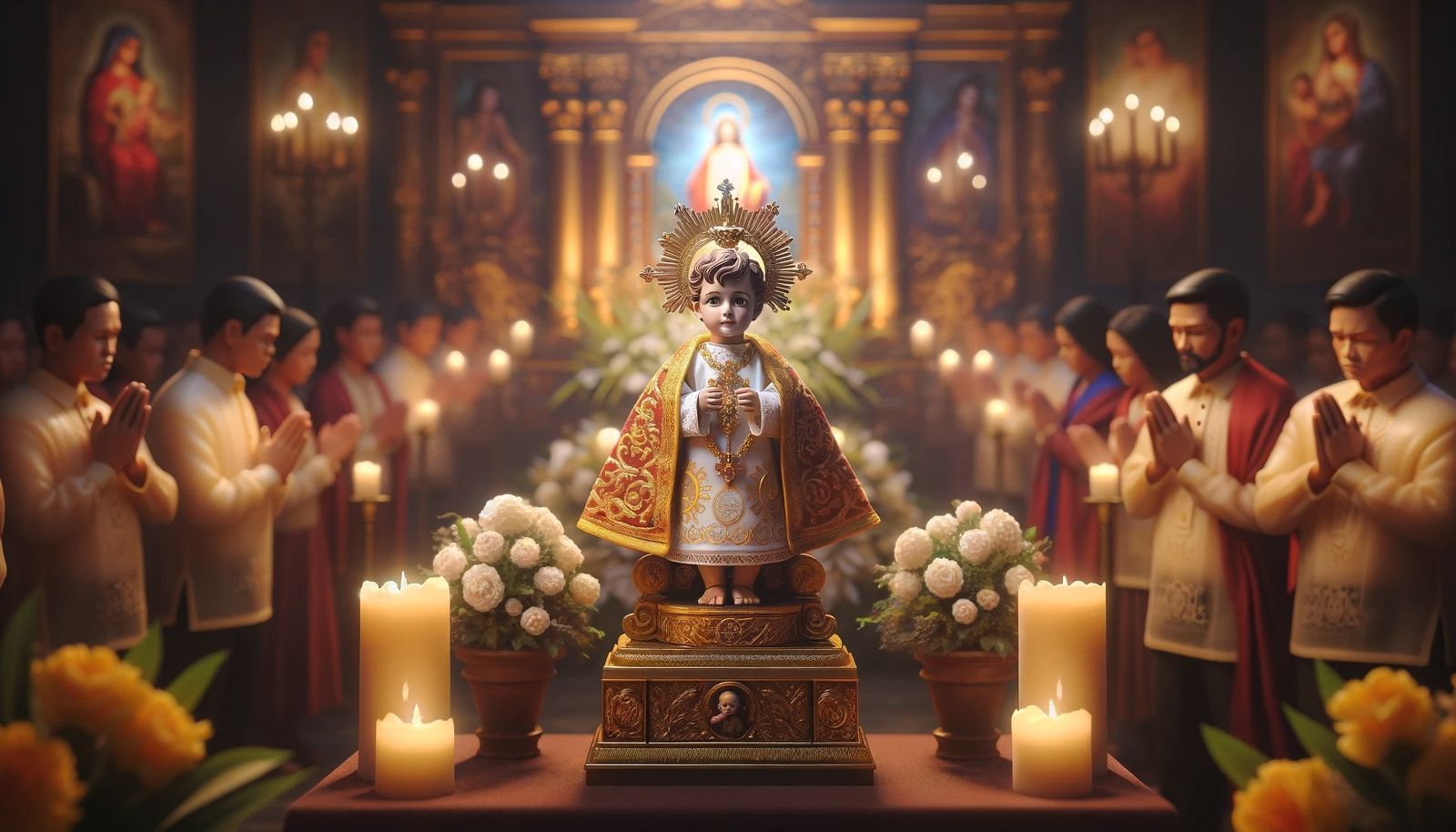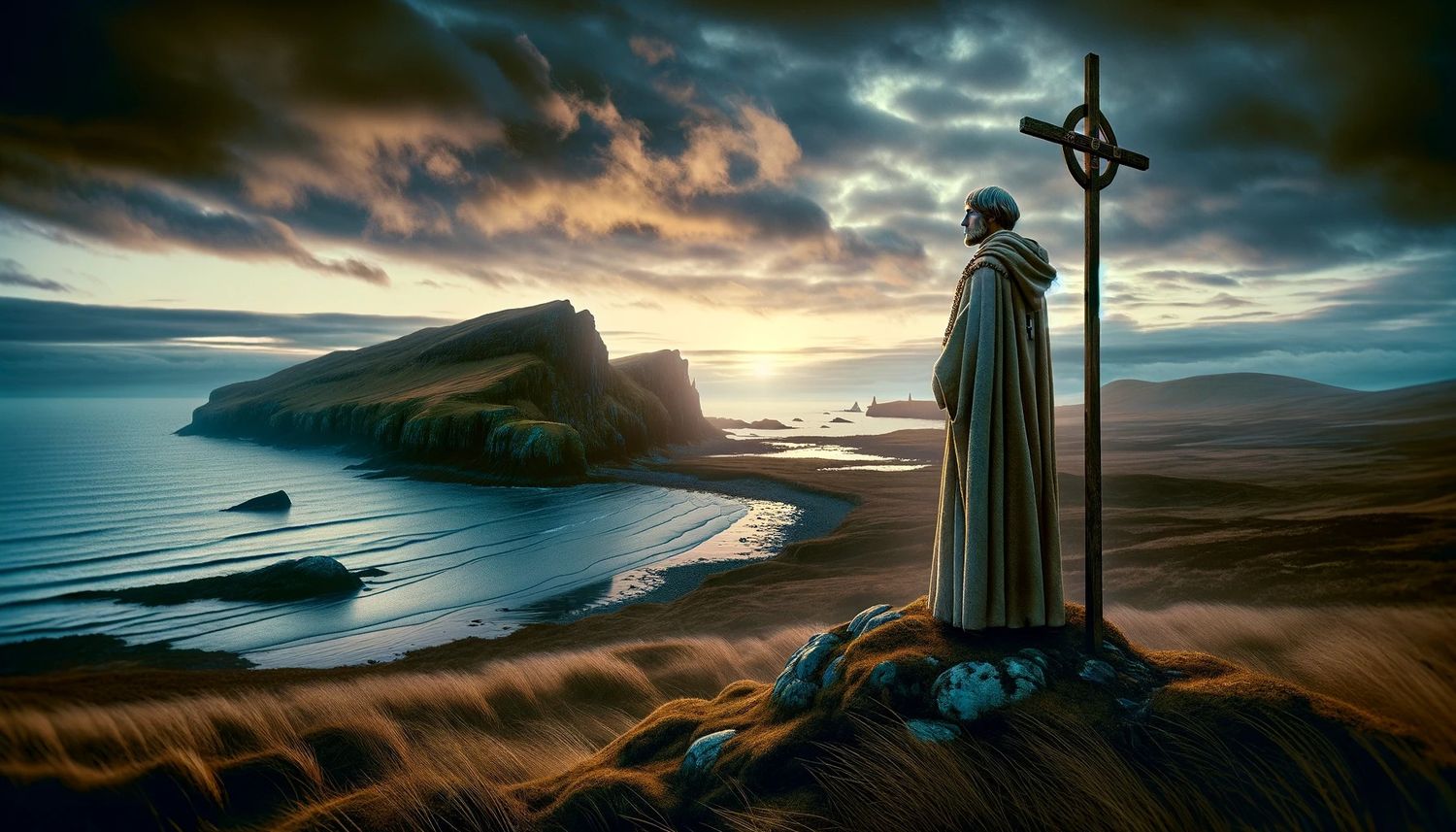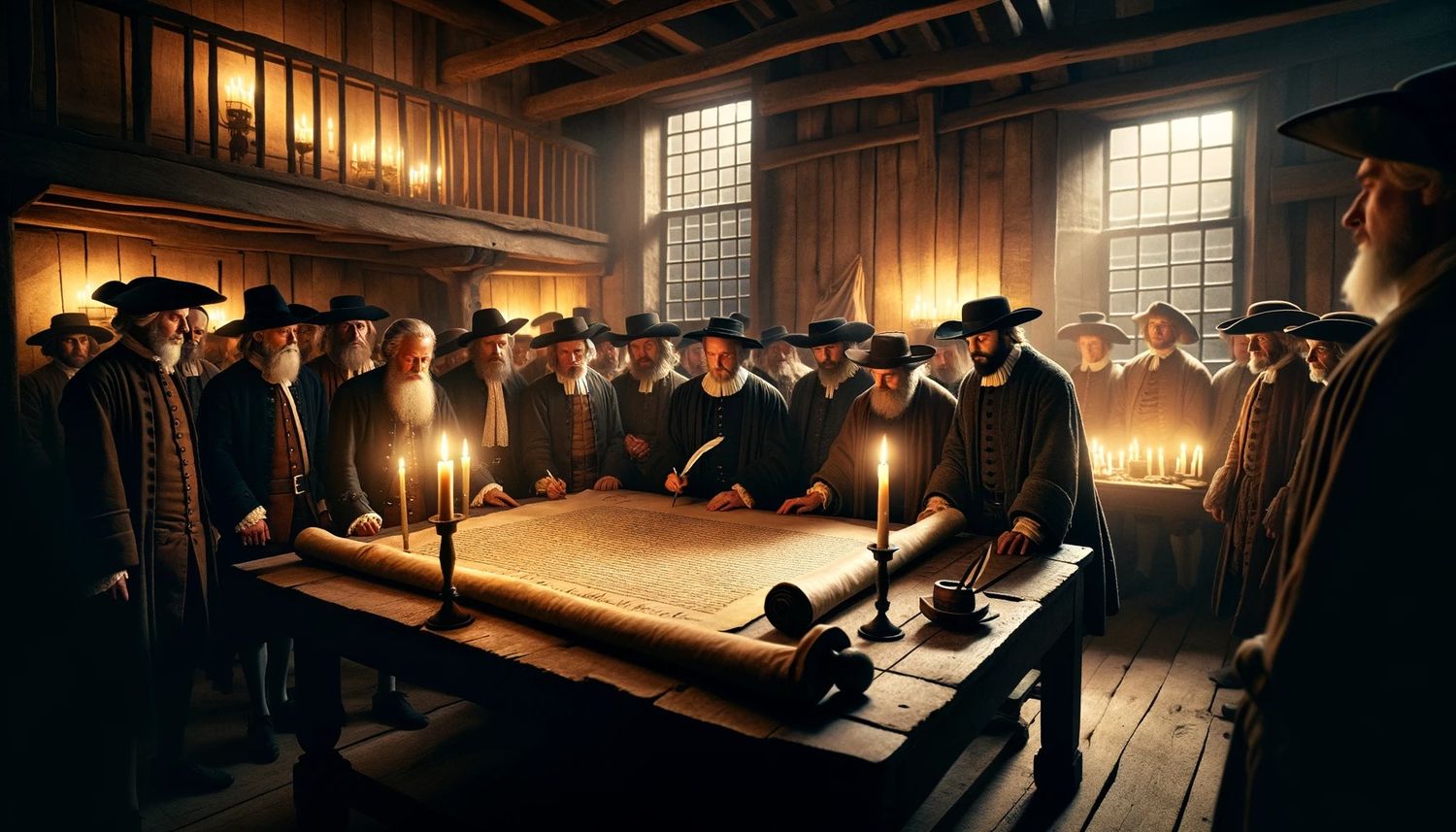Home>Theology and Spirituality>When Did Catholicism Begin In America


Theology and Spirituality
When Did Catholicism Begin In America
Published: February 18, 2024
Jason DeRose, Managing Editor at Christian.net, uses his expertise in religion and journalism to deepen understanding of faith's societal impacts. His editorial leadership, coupled with a strong academic background, enriches the platform’s diverse content, earning him recognition in both journalism and religious circles.
Discover the origins of Catholicism in America and its impact on theology and spirituality. Explore the history and evolution of the faith in the United States.
(Many of the links in this article redirect to a specific reviewed product. Your purchase of these products through affiliate links helps to generate commission for Christian.net, at no extra cost. Learn more)
Table of Contents
Introduction
The history of Catholicism in America is a rich tapestry woven with the threads of exploration, colonization, and religious freedom. It is a story of resilience, faith, and the enduring presence of a religious tradition that has left an indelible mark on the American landscape. From the early Spanish missions to the establishment and growth of the Catholic Church in the United States, the journey of Catholicism in America is a testament to the enduring power of faith in shaping the nation's spiritual and cultural identity.
As we delve into the origins and evolution of Catholicism in America, we embark on a journey that spans centuries and continents. It is a narrative that intertwines with the broader historical context of European exploration and colonization, the quest for religious liberty, and the diverse tapestry of immigrant experiences that have shaped the American experience.
The arrival of Catholicism in America is a story of both triumph and tribulation, as the faithful navigated the complexities of a new land while seeking to preserve and propagate their religious traditions. It is a tale of missionary zeal, institutional growth, and the profound impact of Catholicism on the social, cultural, and political fabric of the United States.
Join us as we explore the early Spanish missions in America, the arrival of English Catholics, the establishment of the Catholic Church in the United States, and the remarkable growth and influence of Catholicism in America. Through this journey, we gain a deeper understanding of the enduring legacy of Catholicism and its integral role in shaping the spiritual landscape of the United States.
Read more: When And How Did Lent Begin
Early Spanish Missions in America
The early Spanish missions in America stand as a testament to the enduring legacy of Catholicism on the continent. The arrival of Spanish explorers and conquistadors in the 16th century brought with it a fervent desire to spread the Catholic faith to the newly discovered lands. Led by figures such as Hernan Cortes and Francisco Pizarro, the Spanish conquest of the Americas was intertwined with the mission of evangelization, as Catholic priests accompanied the expeditions with the aim of converting the indigenous populations to Christianity.
One of the most notable figures in this endeavor was the Franciscan friar Junipero Serra, who played a pivotal role in establishing a network of missions along the western coast of North America, particularly in present-day California. These missions, known as the California Missions, were instrumental in not only spreading the Catholic faith but also in introducing European agricultural techniques and craftsmanship to the indigenous communities.
The Spanish missions served as centers of religious instruction, agricultural production, and cultural assimilation. They became hubs where indigenous peoples were introduced to Catholic rituals, teachings, and practices, often blending elements of their own spiritual traditions with the new faith. The missions also facilitated the acculturation of indigenous communities into Spanish colonial society, leading to the emergence of a unique mestizo culture that combined elements of European and indigenous heritage.
However, the mission system was not without controversy and conflict. The forced labor and cultural suppression experienced by the indigenous populations within the mission compounds have been the subject of historical debate and critique. The missions also became flashpoints for clashes between the Spanish colonizers, indigenous resistance movements, and rival European powers vying for control of the continent.
Despite these complexities, the early Spanish missions in America left an indelible mark on the religious and cultural landscape of the continent. They laid the foundation for the enduring presence of Catholicism in the Americas and established a legacy of faith that continues to resonate to this day. The architectural remnants of these missions, along with the spiritual heritage they imparted, serve as tangible reminders of the profound impact of Catholicism on the early history of America.
Arrival of English Catholics in America
The arrival of English Catholics in America marked a significant chapter in the history of Catholicism on the continent. While the early Spanish missions had established a Catholic presence in the southwestern and western regions, the influx of English Catholics brought a new dynamic to the religious landscape of America.
The 17th century witnessed the arrival of English Catholic settlers in the Chesapeake Bay region, particularly in the colony of Maryland. Founded in 1634 by Lord Baltimore, a Catholic nobleman, Maryland was established as a haven for Catholics fleeing religious persecution in England. The colony's founding charter, the Act Concerning Religion, granted religious freedom to all Christian settlers, a remarkable declaration of tolerance in an era marked by religious strife and persecution.
Under the leadership of Lord Baltimore, Maryland became a refuge for Catholics seeking to practice their faith without fear of reprisal. The establishment of St. Mary's City, the first capital of Maryland, heralded the beginning of a vibrant Catholic community in the New World. Catholic settlers, including prominent figures such as Jesuit missionaries and wealthy landowners, played a pivotal role in shaping the social, economic, and religious fabric of the colony.
The Catholic presence in Maryland faced challenges, particularly during periods of political upheaval and the English Civil War. Tensions between Catholic and Protestant settlers, as well as power struggles within the colony, tested the endurance of the fledgling Catholic community. However, the commitment to religious freedom enshrined in Maryland's founding principles endured, laying the groundwork for the protection of diverse religious practices in the American colonies.
The arrival of English Catholics in America represented a beacon of hope for religious freedom and tolerance. Their contributions to the development of Maryland and other regions left an indelible imprint on the evolving religious landscape of the colonies. The legacy of Maryland's commitment to religious liberty would later influence the drafting of the United States Constitution and the enshrinement of religious freedom in the Bill of Rights.
The presence of English Catholics in America not only contributed to the rich tapestry of religious diversity but also served as a testament to the enduring quest for freedom of conscience. Their journey exemplifies the resilience and determination of individuals seeking to practice their faith in a new land, laying the groundwork for the vibrant and diverse religious mosaic that defines America today.
Establishment of the Catholic Church in the United States
The establishment of the Catholic Church in the United States is a testament to the enduring spirit of faith and the resilience of immigrant communities in shaping the religious landscape of the nation. The roots of the Catholic Church in America can be traced back to the early waves of European colonization and exploration, as well as the influx of Catholic immigrants seeking new opportunities in the New World.
One of the pivotal moments in the establishment of the Catholic Church in the United States occurred with the arrival of French and Spanish missionaries in the 16th and 17th centuries. These early missionaries laid the groundwork for the spread of Catholicism in regions such as present-day Florida, Louisiana, and the Great Lakes, where they sought to evangelize indigenous populations and establish religious outposts.
The 19th century witnessed a significant influx of Catholic immigrants from Ireland, Germany, Italy, and other European nations, driven by economic hardship, political upheaval, and the promise of a new beginning in America. These immigrants brought with them a deep devotion to their Catholic faith, and their arrival transformed the religious landscape of the United States. The establishment of parishes, schools, and charitable institutions by these immigrant communities laid the foundation for the institutional growth of the Catholic Church in America.
The First Vatican Council in 1869 marked a pivotal moment in the history of the Catholic Church, as it reaffirmed the church's authority and doctrine in the face of modern challenges. The council's impact reverberated across the Atlantic, influencing the trajectory of Catholicism in the United States and shaping the identity of American Catholics in the context of a rapidly changing society.
The late 19th and early 20th centuries witnessed the continued expansion and consolidation of the Catholic Church in America, as waves of immigrants from Southern and Eastern Europe further enriched the cultural and religious tapestry of the nation. The dedication of religious orders, clergy, and laypeople in establishing parishes, schools, and social service organizations contributed to the growth and influence of the Catholic Church in the United States.
The establishment of the Catholic Church in the United States reflects the dynamic interplay of faith, culture, and the immigrant experience. It is a story of perseverance, adaptation, and the enduring commitment of Catholic communities to preserve and propagate their religious heritage in a new and diverse land. The legacy of the Catholic Church in America continues to shape the spiritual, social, and cultural fabric of the nation, embodying the timeless values of compassion, solidarity, and the pursuit of the common good.
Growth and Influence of Catholicism in America
The growth and influence of Catholicism in America have been profound, shaping the spiritual, cultural, and social landscape of the nation. From the early waves of European colonization to the present day, the Catholic Church has played a pivotal role in the development of American society, leaving an indelible mark on the country's history.
The 20th century witnessed a remarkable expansion of the Catholic Church in America, driven in large part by the influx of immigrants from diverse cultural and ethnic backgrounds. The establishment of parishes, schools, and charitable institutions by these immigrant communities not only facilitated the preservation of their religious traditions but also contributed to the broader tapestry of American religious life. The dedication of clergy, religious orders, and laypeople in serving their communities and advocating for social justice issues further solidified the influence of Catholicism in American society.
The Second Vatican Council, convened in the 1960s, ushered in a period of renewal and reform within the Catholic Church, resonating deeply with American Catholics. The council's emphasis on liturgical renewal, ecumenism, and social justice aligned with the evolving social consciousness of the era, inspiring a new generation of Catholic leaders to engage with pressing issues such as civil rights, poverty, and peace activism. This era witnessed the emergence of prominent figures such as Dorothy Day, Thomas Merton, and Daniel Berrigan, whose commitment to social justice and peace resonated with a broad spectrum of American society.
The growth of Catholicism in America also manifested in the realm of education, as Catholic schools and universities became integral components of the American educational landscape. These institutions not only provided academic excellence but also instilled values of service, compassion, and ethical leadership in generations of students, contributing to the broader intellectual and moral fabric of the nation.
The influence of Catholicism in America extends beyond the confines of religious practice, permeating the realms of art, literature, politics, and social activism. Catholic writers such as Flannery O'Connor, Walker Percy, and Thomas Merton have left an indelible mark on American literature, infusing their works with themes of faith, grace, and the human condition. In the political arena, Catholic leaders have played pivotal roles in advocating for social justice, human rights, and the dignity of every individual, contributing to the ongoing dialogue on moral and ethical issues in American public life.
The growth and influence of Catholicism in America reflect the dynamic interplay of faith, culture, and the evolving social landscape. It is a testament to the enduring legacy of the Catholic Church and its integral role in shaping the spiritual and moral conscience of the nation. As the Catholic community continues to evolve and engage with contemporary challenges, its influence will undoubtedly continue to resonate across the diverse tapestry of American society, embodying the timeless values of compassion, solidarity, and the pursuit of the common good.
Read more: When Did Sprinkling For Baptism Begin
Conclusion
The journey of Catholicism in America is a narrative of resilience, faith, and the enduring impact of a religious tradition that has left an indelible mark on the American landscape. From the early Spanish missions to the establishment and growth of the Catholic Church in the United States, the story of Catholicism in America is a testament to the enduring power of faith in shaping the nation's spiritual and cultural identity.
The early Spanish missions in America, with figures like Junipero Serra, laid the foundation for the enduring presence of Catholicism on the continent. These missions, while controversial in their methods, became centers of religious instruction, cultural assimilation, and agricultural innovation, leaving a lasting imprint on the religious and cultural landscape of the Americas.
The arrival of English Catholics in America, particularly in the colony of Maryland, represented a beacon of hope for religious freedom and tolerance. Their commitment to establishing a haven for Catholics fleeing persecution in England set a remarkable precedent for religious liberty in the American colonies, influencing the trajectory of religious freedom in the nation's founding documents.
The establishment of the Catholic Church in the United States, shaped by waves of European immigrants and the dedication of clergy and laypeople, reflects the dynamic interplay of faith, culture, and the immigrant experience. The growth and influence of Catholicism in America, particularly in the 20th century, have profoundly impacted the nation's social, cultural, and educational institutions, contributing to the broader tapestry of American religious life.
As the Catholic community continues to evolve and engage with contemporary challenges, its influence will undoubtedly continue to resonate across the diverse tapestry of American society, embodying the timeless values of compassion, solidarity, and the pursuit of the common good. The legacy of Catholicism in America serves as a testament to the enduring spirit of faith and the profound impact of religious traditions in shaping the nation's identity.
In conclusion, the story of Catholicism in America is one of perseverance, adaptation, and the enduring commitment of Catholic communities to preserve and propagate their religious heritage in a new and diverse land. It is a narrative that continues to unfold, shaping the spiritual, social, and cultural fabric of the nation, and embodying the timeless values of compassion, solidarity, and the pursuit of the common good.
